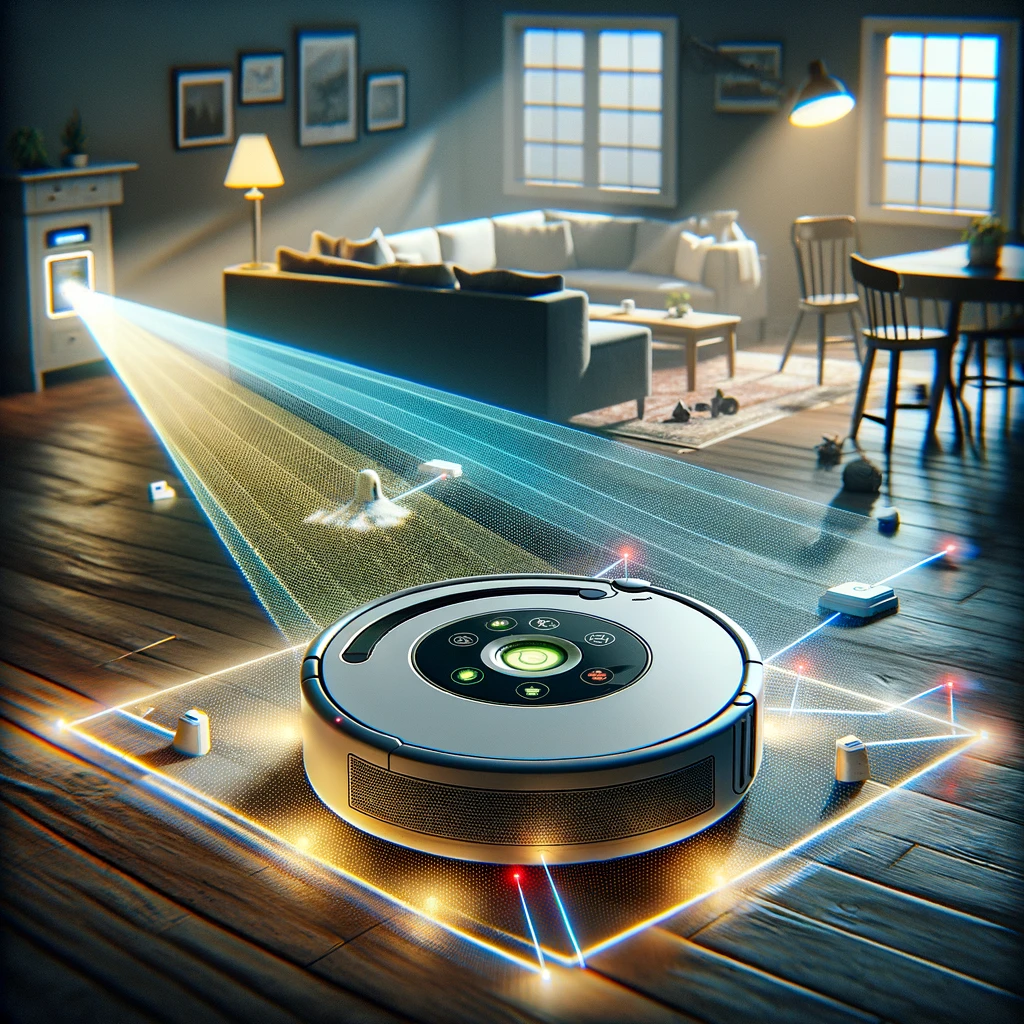Roomba robotic vacuums have revolutionized how we clean our homes, offering convenience and efficiency with the push of a button. At the heart of Roomba’s functionality are its advanced sensors, which play a crucial role in navigation and cleaning performance. Understanding and maintaining these sensors is essential for keeping your Roomba in top condition.
What Sensors Are on a Roomba?
A Roomba is equipped with a combination of infrared and photocell sensors. The infrared sensor at the front of the Roomba detects objects by bouncing light off them, allowing the vacuum to navigate even in low-light conditions. In addition to these, Roomba also utilizes cliff sensors to avoid drops, such as stairs, and dirt detection sensors to identify areas that need extra attention.
How Do Roomba Sensors Work?
- Cliff Sensors: Located on the underside of the Roomba, these sensors use infrared signals to measure the distance between the vacuum and the floor. If the signal doesn’t bounce back immediately, the Roomba knows it’s approaching a stair or drop-off and will change direction.
- Dirt Detect Sensors: These sensors help the Roomba identify areas with higher concentrations of dirt or debris. When a dirt event is detected, the Roomba will focus its cleaning efforts on that area.
- Wall Sensors: Roomba uses light touch bumper technology to identify walls and obstacles. This technology allows the Roomba to slow down and gently touch the obstacle before changing direction.
How to Test and Maintain Roomba Sensors
To ensure your Roomba operates efficiently, it’s important to regularly test and clean its sensors:
- Testing the Room Confinement Sensor (RCON): Place the Roomba about six feet from its dock, facing forward. Press the Clean button for three seconds to clear any previous cleaning jobs. Press the Clean button again, then press Dock to test the sensor.
- Cleaning the Bin Sensor: For the Roomba 700 series, locate the two black rectangular sensors inside the robot where the Dust Bin was. Wipe these sensors with a clean, dry microfiber or soft cotton cloth.
- Regular Maintenance: Regularly inspect and clean all sensors, including cliff sensors and the front infrared sensor, to prevent dirt buildup that could impair functionality.
Common Issues and Solutions
Despite their advanced technology, Roombas are not without their challenges. Common issues include difficulty with mapping, clogging with pet hair, limited range, and self-canceling jobs. To mitigate these problems, ensure that your Roomba’s sensors are clean and unobstructed, and regularly empty the bin and clean the brushes.
Conclusion
Roomba clean sensors are crucial for the efficient operation of your robotic vacuum. Regular maintenance and testing of these sensors can help prevent common issues and ensure that your Roomba continues to keep your floors clean with minimal effort on your part. By understanding how these sensors work and how to care for them, you can maximize the performance and longevity of your Roomba.
Here are some frequently asked questions (FAQs) about Roomba clean sensors:
- What are the main types of sensors on a Roomba? A Roomba is equipped with infrared, photocell, cliff, dirt detection, and wall sensors, which help it navigate and clean effectively.
- How do I test the Room Confinement sensor (RCON) on my Roomba? To test the RCON sensor, place the Roomba about six feet from its dock, facing forward. Press the Clean button for three seconds to clear any previous cleaning jobs. Press the Clean button again, then press Dock.
- Where is the bin sensor located on a Roomba 700 series? The bin sensor is located inside the robot where the Dust Bin was, on either side of the robot. They are two black rectangular sensors that should be wiped clean with a microfiber or soft cotton cloth.
- How many sensors do Roombas have? The number of sensors can vary depending on the model, but typically a Roomba has multiple sensors, including at least four cliff sensors, dirt detect sensors, and wall sensors.
- How do robot vacuum sensors work? Robot vacuum sensors, like cliff sensors, use infrared signals to measure the distance between the cleaner and the floor. If the signal doesn’t bounce back immediately, the vacuum detects a stair or drop-off and changes direction.
- What is a bin sensor? A bin sensor is attached to the trash bins of a Roomba and provides live data on full levels, locations, and temperatures. This data helps manage waste collection operations more efficiently.
- How does Roomba detect dirt? Roomba uses Dirt Detect sensors to sense areas with a higher concentration of debris. When a dirt event is detected, the Roomba will focus its cleaning efforts on that area.
- What are some disadvantages of using a Roomba? Common complaints include difficulty with mapping, frequent clogging with pet hair, limited range, and self-canceling jobs.
- How do Roombas detect walls? Roombas use light touch bumper technology to identify walls and other obstacles. This technology allows the robot to slow down and gently touch the obstacle before changing direction.
- How often should I clean my Roomba’s sensors? It’s recommended to clean the sensors about once a month or as needed, depending on the frequency of use and the environment in which the Roomba operates.

